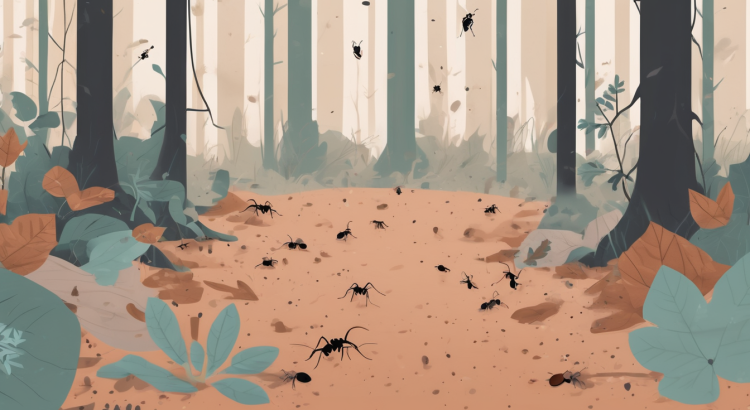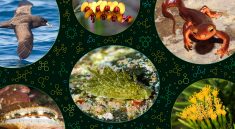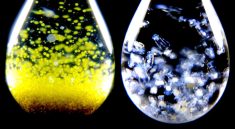Simple Machines Forum reports how invasive ants disrupt local habitats by rapidly changing food webs, soil dynamics, and native species survival within small ecological niches.
Why Invasive Ants Disrupt Local Habitats So Quickly
Many biological invasions are slow, but invasive ants disrupt local habitats with unusual speed. They form dense supercolonies, overwhelm native ants, and take control of food resources in a short time.
They exploit human-altered environments, including gardens, farms, and urban parks. As a result, their impact on micro-habitats often begins at doorsteps, sidewalks, and agricultural fields.
Once established, invasive ants disrupt local habitats by monopolizing nectar, seeds, dead insects, and even small vertebrates. Native species must either adapt, move, or vanish from these small spaces.
Mechanisms That Allow Invasive Ants to Dominate
Some ant invaders have queens that produce huge numbers of workers throughout the year. This constant reproduction helps invasive ants disrupt local habitats more efficiently than native species with seasonal cycles.
They often recognize many nests as one extended colony. Therefore, workers from different nests do not fight each other and can cooperate across large areas.
This cooperation allows fast expansion along roads, irrigation systems, and building foundations. Invasive ants disrupt local habitats by turning these corridors into highways for foraging and nesting.
Impacts on Native Ants and Invertebrates
When invasive ants disrupt local habitats, native ant communities usually shrink dramatically. Aggressive invaders outcompete or directly kill local species.
This change is not just a simple swap between ant species. Native ants often perform key roles such as seed dispersal, soil aeration, and natural pest control. Their loss reshapes ecological processes in each micro-habitat.
Other invertebrates suffer as well. Spiders, beetles, caterpillars, and pollinating insects face increased predation pressure. Invasive ants disrupt local habitats by hunting them or stealing their food.
How Micro-Habitats Are Structurally Altered
Soil structure can change when invasive ants disrupt local habitats through intense tunneling and nest building. Different species move soil at different depths, affecting moisture and nutrient patterns.
In some invaded areas, ant mounds concentrate organic material on the surface. Meanwhile, deep layers receive less mixing. This subtle shift influences root growth and microbe communities.
Plant litter decomposition also changes. Because invasive ants disrupt local habitats, they modify how dead leaves, seeds, and small carcasses are broken down and redistributed.
Food Web Shifts and Cascading Effects
Once invasive ants disrupt local habitats, food webs rarely stay intact. They may remove key prey species or provide easy food for predators attracted to high ant densities.
Birds, reptiles, and small mammals sometimes feed heavily on the new ants. However, this does not always compensate for losses of other insects and native ants.
On the other hand, some predators avoid invasive ants due to their chemicals or defensive behavior. In those cases, invasive ants disrupt local habitats by creating zones of low predation where they can expand even more.
Case Examples of Invasive Ant Impacts
The red imported fire ant is a key example of how invasive ants disrupt local habitats. Its painful sting deters many animals from using invaded areas for nesting or foraging.
Argentine ants often form supercolonies that extend across cities and agricultural valleys. In these regions, invasive ants disrupt local habitats by displacing nearly every native ant species.
Read More: Global study reveals long-term ecosystem shifts driven by invasive ants
Yellow crazy ants provide another striking case. They spray formic acid on prey and even on small vertebrates. When invasive ants disrupt local habitats this way, native crabs, lizards, and ground-nesting birds can decline quickly.
Human Environments and Agricultural Micro-Habitats
Farm edges, greenhouses, and irrigation channels are typical points where invasive ants disrupt local habitats. They follow water lines, electrical conduits, and packaging routes.
In orchards and vegetable fields, ants often farm sap-sucking insects such as aphids and scale insects. As invasive ants disrupt local habitats, they protect these pests from natural enemies in exchange for sugary honeydew.
Consequently, farmers face higher pest pressures. In addition, some invasive species chew wiring and contaminate food processing areas, adding economic losses to ecological damage.
Monitoring and Early Detection Strategies
Because invasive ants disrupt local habitats before being widely noticed, early detection is essential. Simple bait stations with sugar or protein can reveal new incursions.
In addition, standardized surveys of ant communities in parks, farms, and urban green spaces help detect sudden shifts in species composition. Sudden dominance by a single aggressive species can signal trouble.
Public reporting tools support scientists by collecting photos and location data. When people understand that invasive ants disrupt local habitats, they are more willing to report unusual colonies.
Management Tools to Protect Micro-Habitats
Once invasive ants disrupt local habitats, complete removal is rarely possible. However, targeted management can reduce their density and slow further spread.
Baiting strategies that combine low-toxicity insecticides with attractive foods are commonly used. They allow workers to carry toxins back to the nest and reach hidden queens.
Habitat management also matters. Reducing food waste, sealing building cracks, and limiting plant species that favor honeydew-producing insects can make it harder for invasive ants disrupt local habitats on a large scale.
Building Resilience in Vulnerable Ecosystems
Healthy, diverse communities are more resistant when invasive ants disrupt local habitats. Protecting native plants, restoring ground cover, and conserving leaf litter all support beneficial invertebrates.
Meanwhile, coordinated regional planning helps avoid reinfestation from untreated neighbors. Cooperation among homeowners, farmers, and land managers can reduce the chances that invasive ants disrupt local habitats again after control campaigns.
Ultimately, understanding how invasive ants disrupt local habitats allows communities to take earlier, smarter action, safeguarding micro-habitats that support broader ecosystem health.



